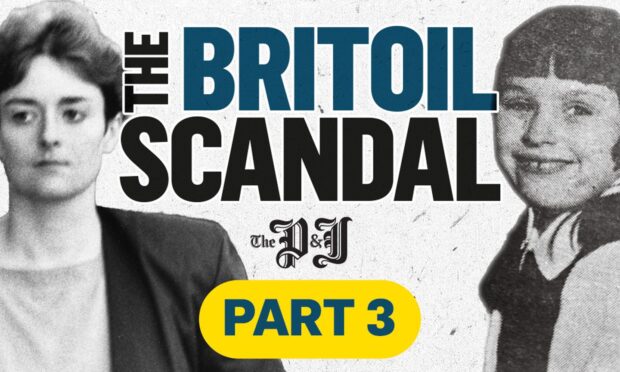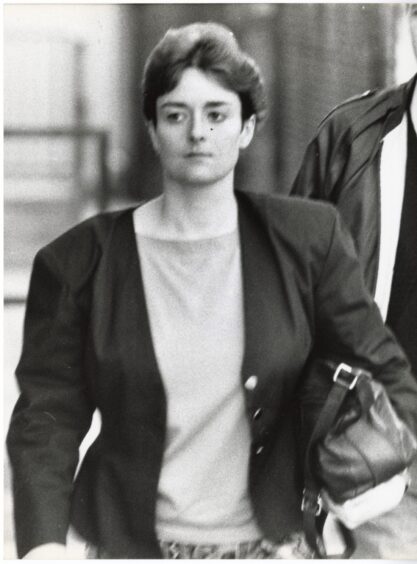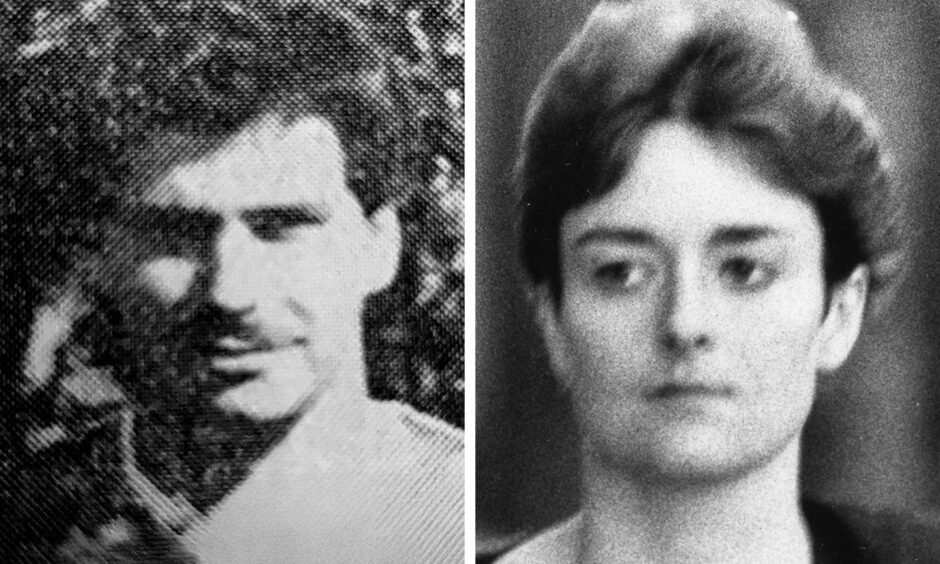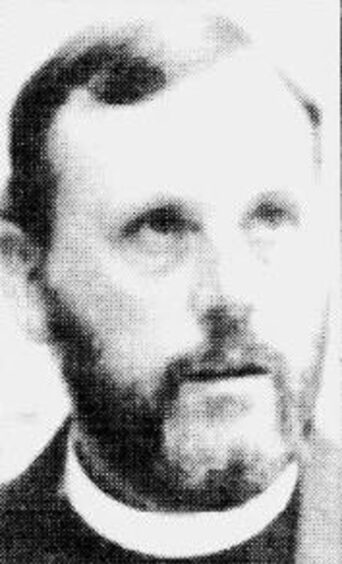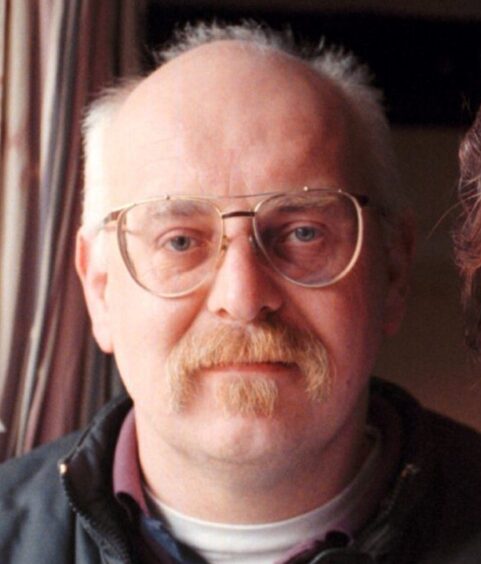After learning that suspect Roy Allen was having hushed phone conversations with a mystery woman, detectives on the £23m Britoil fraud case were keen to look into his activity.
First, police searched Roy Allen’s house in Balmedie.
Detective Constable Moir said: “Roy was shacked up with a 16-year-old office junior.
“We go out to Balmedie, and he is there with this 16-year-old girl.
“We didn’t find much in the house.”
Next up for police was a trip to the office Roy shared with David Nance in South Silver Street.
The search hits gold
Detectives spent more than an hour sifting through Roy Allen’s work papers without turning anything up – until they hit gold.
DC Moir recalled: “When I do searches like this, I like to be very methodical.
“I opened a drawer in Roy Allen’s desk and took it right out of its fitting. I turned the drawer over.
“Looking back, I don’t know what made me overturn it. I just always do things methodically.
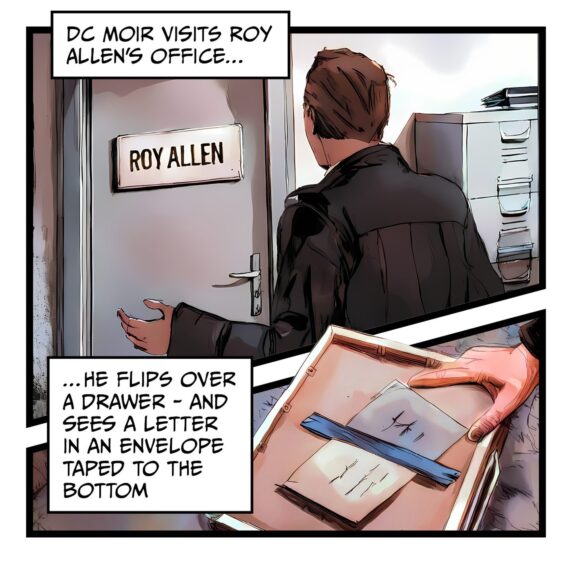
“And underneath the drawer, this letter is taped to the bottom.”
At this point, nine months had passed since the attempt to steal £23m from Britoil and Roy Allen had had multiple opportunities to confess to his involvement.
Instead, he insisted on his innocence and said he had no idea where Alison Anders was.
But who was the author of this letter?
None other than Alison Anders.
‘Roy wouldn’t snitch on his sweetheart’
DC Moir said: “It was a letter from Anders saying ‘I’ve been missing you’. It was quite X-rated in places.
“From that point on, we were certain Roy Allen was involved.
“With this major fraud investigation, things had turned on their head in a couple of days.”
But police knew they still needed more evidence and that Allen would not give up his sweetheart willingly.
DC Moir said: “There was no way Roy was going to admit anything.
“There’s no way he would have grassed up Alison.”
There was, however, enough evidence to charge Roy Allen.
He appeared at Aberdeen Sheriff Court in connection with attempted fraud and was remanded in custody.
That gave investigators a chance to delve through the treasure trove of new information they had.
Who is Ann Killick?
A name they discovered would finally solve the riddle of how Alison Anders was able to globetrot for almost a full year and evade Interpol.
Ann Killick.
It is at this point that the story ceases to become one of a “victimless” white-collar crime and takes a very sinister turn.
To explain how Ann, a dead eight-year-old girl from London, is connected with the story, we have to rewind a year to spring 1988.
At that point, Anders was working for Britoil, a firm boasting an annual turnover of more than £1 billion, with interests in 10 North Sea oil fields, with vast sums passing through its accounts on a daily basis.
A highly intelligent and observant woman, little got past the attention of Alison Anders on the office floor at Britoil.
She noticed everyone come and go.
And she was alert to chinks in the company’s armour.
Anders believed there were too few checks on money transfers.
She even told her bosses that the anti-fraud mechanisms were weak and someone could exploit them.
‘She never intended to do anything’
We spoke to two of her friends, neither of whom wanted to be named, who supported this claim.
One of the friends, who knew Anders from the moment she arrived in Aberdeen from the south of England, told us: “Alison once expressed her concern to me that it would be easy for someone to steal from her firm.
 “At that point, Alison said it because she was worried, not because she intended to do anything.
“At that point, Alison said it because she was worried, not because she intended to do anything.
“Just as someone might say ‘if they keep that door open, someone might rob the place’ – but that doesn’t mean they are going to rob the place themselves.”
The other friend, who knew Alison Anders in the mid-1990s, said: “Alison warned Britoil that their financial processes were wide open to abuse and fraud.
“She was doing the right thing by raising the alarm – but top bosses just weren’t interested.”
Anders also told her lover, Roy Allen.
But this time, Anders wasn’t ignored.
‘If they won’t protect their money, he’d take a chunk’
The friend added: “Roy was a clever bloke – maybe too clever for his own good.
“He probably thought – if Britoil aren’t interested in safeguarding the money, he would take a chunk of it.”
Later, Anders herself would describe how the plan she and Roy Allen had to steal more than £23m from Britoil came together after a game of bridge at Westburn Park Lodge.
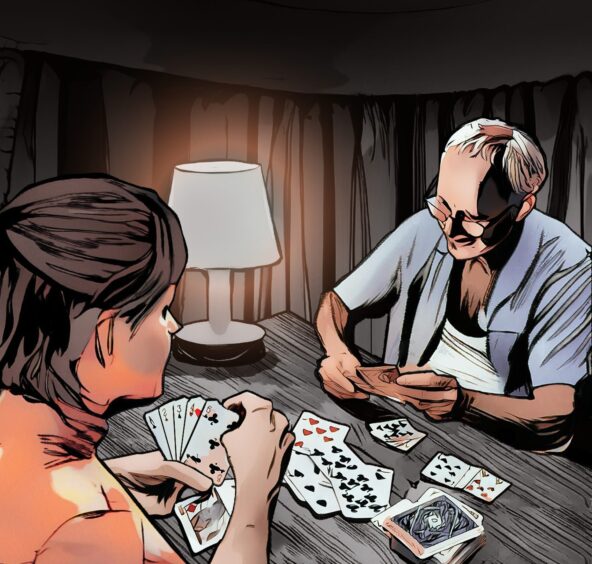
In court, Anders said: “One night, after playing badly at bridge, Roy and I were having a ghastly post-mortem of the game.
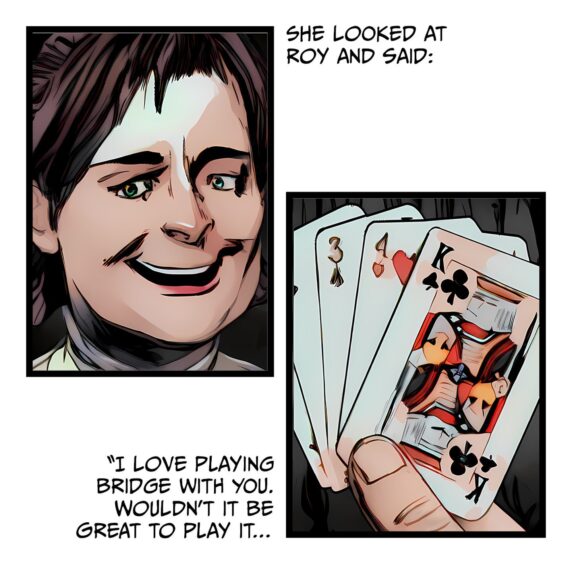

“I tried to divert attention from that and suggested that I needed more practice – maybe on a beach in Rio in July.
“Roy looked up. He had gone quiet for a while, and then we resumed talking about bridge.”
It would appear that this conversation about dreams of a Rio beach fired the starting gun for what would be an astounding crime, but the pair needed a plan.
A plot straight out of a hitman novel
Anders intended to jump the border as soon as the £23m funds had been embezzled.
But she needed a way of going undetected to get a head start on the authorities.
Because – whether it was her birthday or not – if police knew she’d jetted off on the very day the fraud took place, she would fall under suspicion.
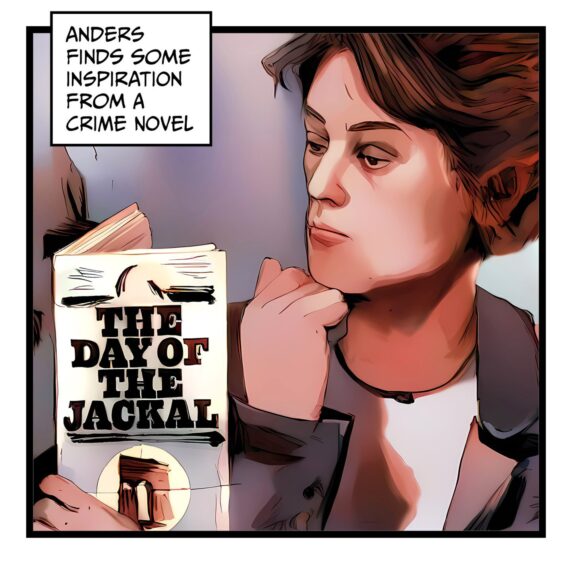
And so Anders turned to the plot of Frederick Forsyth’s best-selling novel The Day of the Jackal for inspiration.
A Nelson Mandela rally
In 1988, South African civil rights campaigner Nelson Mandela was still being held behind bars.
There was a worldwide movement to free him and establish racial equality in South Africa – and that movement was huge in the UK.
On June 11, 1988, a massive Free Mandela concert took place at Wembley Stadium – with a packed house and a huge worldwide TV audience.
Among the performers were Whitney Houston, George Michael and Dire Straits.
Alison Anders told pals and loved ones that she was going to travel from Aberdeen to the English capital for the concert – but that was a lie.
Instead, she was conjuring up a deceitful plan that paved the way for the £23m fraud.
Passing through London, Anders continued to Kent and visited Dartford Public Library – close to the town of her birth.
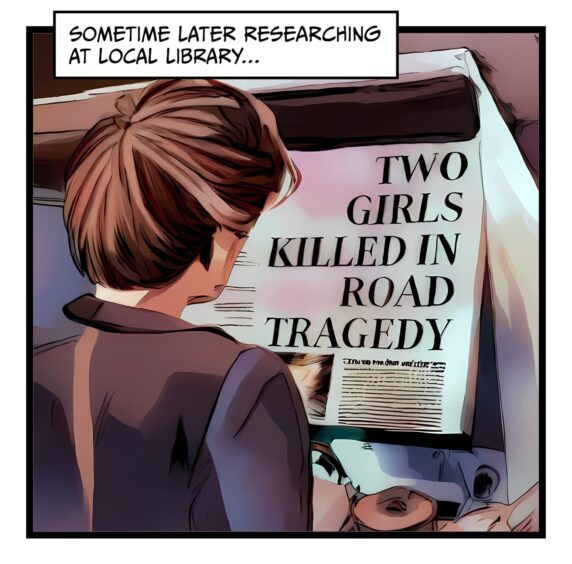
She scanned microfilm until she found exactly what she was looking for.
A newspaper cutting from 1971 outlined a heartbreaking event involving two young sisters.
The girls were skipping home from school when tragedy struck.
As the pair crossed Maiden Lane in the London borough of Crayford, a lorry struck them – taking two lives that had barely started.
Ann Killick was eight and her younger sister Dawn was five when the crash took place on a Tuesday afternoon in August 1971.
Exploiting a family’s devastation
It was a horrific crash that would shock the girls’ community – and one that Anders would exploit for her own ends.
Anders grabbed a pen and paper and noted down the details of Ann Killick’s death.
She used those details to obtain Ann Killock’s birth and death certificates.
Arriving home in Aberdeen, Anders booked her flight – then made a phone call to Glasgow Passport Office.
Anders booked an appointment for June 24 – and she was cutting it fine.
For her plan to work, she needed to be on a plane five days after that appointment.
Any delay in getting a passport and her escape would be scuppered.
At any rate, Anders went to Glasgow Passport Office on the morning of June 24 – and from this point there was no turning back.
She walked into the office, shook hands with staff member Mary Singleton – and introduced herself as Ann Killick.
DC Moir said: “Up until this point, it was an all idea, on paper.
“But as soon as she had introduced herself as the dead girl – and applied for the passport – there was a paper trail.
‘There was no turning back’
“From this point on, the plan was on. There was no turning back and Anders was up to her neck in it.”
Anders handed over the birth certificate of Ann Killick, along with a passport application form which claimed Ann Killick was 25 and lived on Prospect Terrace in Aberdeen.
But there was something else Anders needed.
When applying for passports back in the late 1980s, the applicant had to get someone to vouch for them.
The passport application form had to be signed by someone working in a recognised profession or who is “a person of good standing in their community”.
Anders knew this person of good standing would have to be someone who a surviving Ann Killick would know.
‘Anders did her research for the crime’
DC Moir said: “Nobody ever doubted that Anders was clever. She definitely did her research thoroughly.”
Anders got hold of a copy of a publication called Crockford’s Clerical Directory.
It’s a list of all the vicars in the Church of England – a kind of Who’s Who for Christians up and down the country.
Using this book, Anders was able to deduce that Ann Killick’s local vicar was Rev Cannon Derek Carpenter.
He was the man at the helm at St Paulinus Church in Bexleyheath, Dartford – a grade-two-listed church dating back more than eight centuries and referenced in the Doomsday Book.
His signature was forged on the application.
Another potential problem was that the passport had to be fast-tracked – but Anders needed to prove there was justification for that.
And so she also handed over a letter from Britoil confirming she was going to travel in the next few days.
Given that nobody from Britoil knew of this plan, this documentation must also have been forged.
For Anders, the next part of her plan had come to fruition.
Her passport, bearing the name of Ann Killick, was issued the same day.
A shocking new lead in Britoil fraud case
For detectives looking to crack the case, the name of Ann Killick kept coming up.
And so they checked whether a passport existed in that name – and one did.
Which was understandably very surprising to them, given Ann had been tragically killed.
And so detectives approached Glasgow Passport Office and dug out the application form.
What police could not see at this stage was the picture of the person who held this passport – and so they were still totally in the dark about what was going on.
But detectives were determined to pursue this shocking new lead – and it would take them from Aberdeen on a 1,100-mile round trip.
DC Moir told us: “We went down to see Rev Cannon Carpenter in Kent.”
‘I can show exactly where she is’
It was a logical connection for Grampian Police.
They had, after all, a passport application form with Rev Cannon Carpenter’s signature on it, so he would be a good place to start.
Speaking for the first time about his experience, Rev Cannon Carpenter told us: “The first I knew of this outrageous story was when a black saloon came down my drive at Crayford with two policemen in it.
“They showed me the passport application form with the signature on the back.
“Then they asked me whether it was my signature that was on it.
“Of course, it wasn’t. It was clearly forged.”

That was useful information to detectives, but DC Moir was still puzzled.
He had no idea who Ann Killick was.
And so he posed the question to Rev Cannon Carpenter, more in hope than expectation.
‘He took us across to the graveyard’
DC Moir added: “I asked and Rev Cannon Carpenter replied ‘yes, I can show you exactly where she is’.
“He took us across to the graveyard.”
In fact, Rev Cannon Carpenter had officiated at young Ann’s funeral.
At that moment, the sheer magnitude of what Alison Anders had done hit DC Moir.
Through first-class detective work, DC Moir had finally deduced that Anders mimicked The Day of the Jackal plot.
She had used the identity of a dead eight-year-old girl to commit a crime, forge a passport and flee the country.
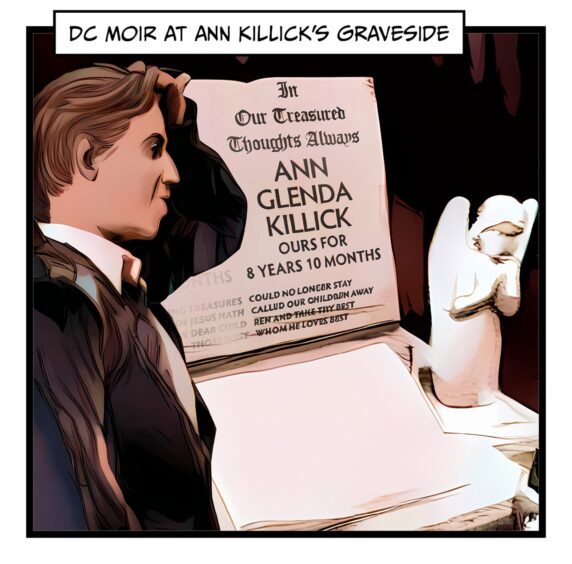
He said: “It was all starting to become clear.
“At the time, I never gave much thought to the devastating impact this would have had on the Killick family.
‘She never acknowledged what she did’
“I was a lot younger then. When you’re younger, you don’t have the same emotions.
“When you’re older and you have family, you think ‘if that happened with my kids, how would I feel?’
“Alison didn’t even acknowledge the hurt she caused to that family.”
The next task DC Moir had to perform was one of the most difficult of his long career with Aberdeen CID.
He went to see the parents of Ann Killick – and was about to discover things were even worse than he could possibly imagine.
The same family suffered another tragedy
Rev Cannon Carpenter said: “I got to know the Killicks really well in 1987.
“When their daughters Ann and Dawn had died, their mum and dad had another child. He was called Paul.
“And he died in almost the same way, when he was 14 years old.
“It was October 1987, he died. A similar road accident.
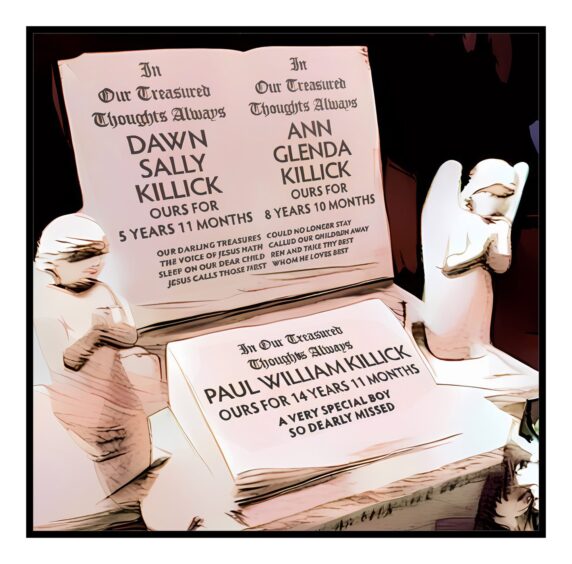
“And that was when I first met the family.
“They had moved to a neighbouring parish but wanted the child buried in the same plot as his two sisters.”
Unbeknownst to Grampian Police, the Killick family were grieving the loss of a third child when detectives knocked on the door.
‘Their lives had been shattered’
Paul had died just a year earlier.
DC Moir said: “We went to see Mr and Mrs Killick.
“I had a degree of apprehension, but it’s a task that has to be done.
“They were a lovely couple and their life had been shattered by losing their kids.
“After visiting Rev Cannon Carpenter, we knew about the first crash – but not about the second.
“It was so horrendous for that family.
“We said ‘Alison Anders has been using your daughter’s name’.
“They were genuinely very nice and humble people and they were disappointed at what Anders had done.
“But they had suffered so much heartbreak in their life that this act of deceit couldn’t really make things worse for them.”
A letter of apology
Some months later, when the parents of Alison Anders discovered the full scale of their daughter’s crimes, they were outraged and took steps to make amends.
We can today reveal that James and Elsie Anders wrote a heartfelt letter of apology to the Killicks, expressing their disgust at their own daughter’s actions.
They delivered the letter via the clergy.
Rev Cannon Carpenter shared the contents of the letter with the Press and Journal, but we are choosing not to publish it to respect the privacy of both families.
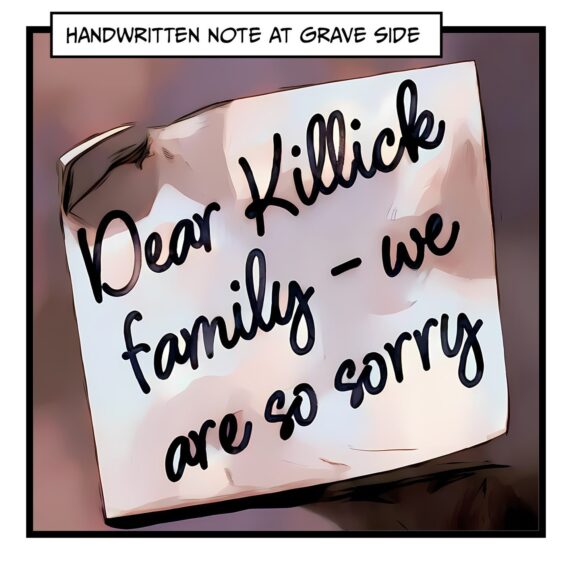
Rev Cannon Carpenter said: “It seemed to me there was very little remorse on Alison Anders’ part. But the parents were very upset about it.
“I certainly conveyed to the Killicks that I had received the letter from the Anders family and the terms in which they wrote it.
“Knowing the Killicks, they were obviously deeply hurt by the death of their children earlier – but that had been 16/17 years before – and the death of Paul was, of course, another great blow to them.
‘They were grateful for the letter’
“But they were generous and kindly people and I think they accepted the letter with good grace.
“They wouldn’t have wanted to respond to it in any way.
“But they would have been grateful that, at least, the parents of Alison Anders had thought to express their own feelings in that particular way – even though Alison Anders, who is the one who ought to have apologised, did not and will probably never do so.”
It was an emotionally exhausting journey south for the detectives, but at least they had made progress in the Britoil fraud case.
After returning to Scotland, DC Moir and his colleagues got straight back to work.
They turned the screw on Roy Allen by asking him for a handwriting sample so they could check whether he forged a signature on the passport applicant.
He refused, but police got samples from his office, anyway.
DC Moir said: “When you requested handwriting comparisons as a police officer, you would hardly ever get a match, but this one – we did.
“Our colleagues said – ‘100% – that is his handwriting’.
“It was the smoking gun.”
And it got worse for Allen.
A study of his bank account revealed that, around the end of June 1988, he had withdrawn £1,000.
And, when his wife Megan noticed the withdrawal and asked him about it, Allen admitted that he had paid for Anders to fly from Aberdeen on the day of her birthday to Abu Dhabi.

When police booked Allen in at Queen Street Station in Aberdeen, they found a tiny sliver of paper in his wallet with a phone number.
Detectives checked the area code, and it was USA.
A flower shop in Oregon called Jacobsen’s.
And though it was outrageous to believe Alison Anders had skipped from Aberdeen to Glasgow, onwards to Paris, then to Abu Dhabi and somehow ended up on the other side of the world, police knew Oregon was exactly where she would be.
- The P&J made several attempts to contact Alison Anders over a period of several months and she did not return our messages.
COMING TOMORROW IN PART FOUR: A dramatic FBI street sting leads Anders back to Aberdeen – as the eyes of the world fall on a Granite City courtroom.
